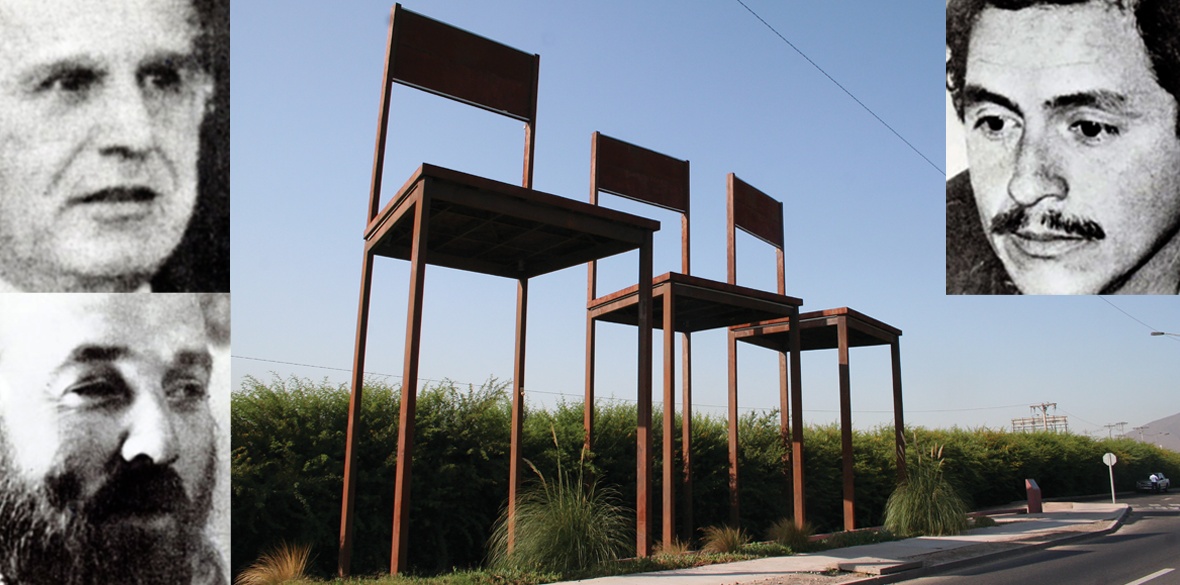This is the last article you can read this month
You can read more article this month
You can read more articles this month
Sorry your limit is up for this month
Reset on:
Please help support the Morning Star by subscribing here
AT THE north-western edge of Chile’s capital Santiago lies the neighbourhood of Quilucura. In the Mapuche language of Mapudungun, Quilucura means “three stones” and refers to the three hills that separate it from the Renca neighbourhood.
That number, however, came to take on the most gruesome of associations.
On March 28 1985, Santiago Nattino Allende, Manuel Guerrero Ceballos and Jose Manuel Parada Maluanda, three militants of Chile’s Communist Party, were abducted by agents of Carabineros de Chile, the federal police, tortured and later had their throats cut in cold blood.
Their bodies were dumped on Avenue Americo Vespucio North, opposite Pudahuel international airport at the edge of Quilicura.
Today, next to the spot where the bodies were found, their memory is immortalised with the monument Tres Sillas (“Three Chairs”).
Over 10 metres high, the sculpture was designed by Jorge Lankin Vega, assisted by architects Rodrigo Mora Vega and Angel Munoz and it was the winner of a public competition organised by the human rights programme of the Chilean Ministry of the Interior and the Ministry of Public Works.
The enormous nondescript chairs epitomise absence, lives cut short and the martyrdom of the three. But in a wider sense this extends to the 40,000 who were savagely tortured, disappeared and the 3,095 who were murdered during the 17-year, US-instigated Pinochet dictatorship.
The shape of the Three Chairs mimics that of ordinary classroom chairs, directly alluding to and honouring the contribution to education made by the three. They were activists of a newly founded opposition teachers’ union.
The Chairs are placed on a concrete walkway, where details of the event are engraved on a special plaque, which leads to an adjacent wooded plaza del encuentro (meeting square) at the exact spot where the bodies were found.
The barbaric murder caused widespread indignation and compelled Chile’s Supreme Court to investigate the crime.
Two colonels, one major, two captains and two non-commissioned officers of the Carabineros were arrested. Sixteen were sentenced to prison terms, six of them for life.
Five years later in central Santiago on May 11 1990, a special unit of the military wing of the Communist Party of Chile — the Manuel Rodriguez Patriotic Front (Autonomous) — executed Colonel Luis Fontaine Manriquez, the perpetrators’ commanding officer at the time of the crime.
The Three Chairs memorial was inaugurated on March 29 2006, on the 21st anniversary of the murder, by Chile’s then president Michelle Bachelet.
She declared that remembering this moment is what allowed Chile to move forward, adding, rather overoptimistically: “The Chile of hatred has given way to a Chile of peace but not just any peace … one that is founded on memory, on remembrance.”
History has since told a somewhat different story. Not for the first time, in January 2018, the memorial was substantially damaged in a wilful act of vandalism.
It was “a desecration of the memory and an insult to the families of the victims of the dictatorship,” Quilicura mayor Juan Carrasco declared.









